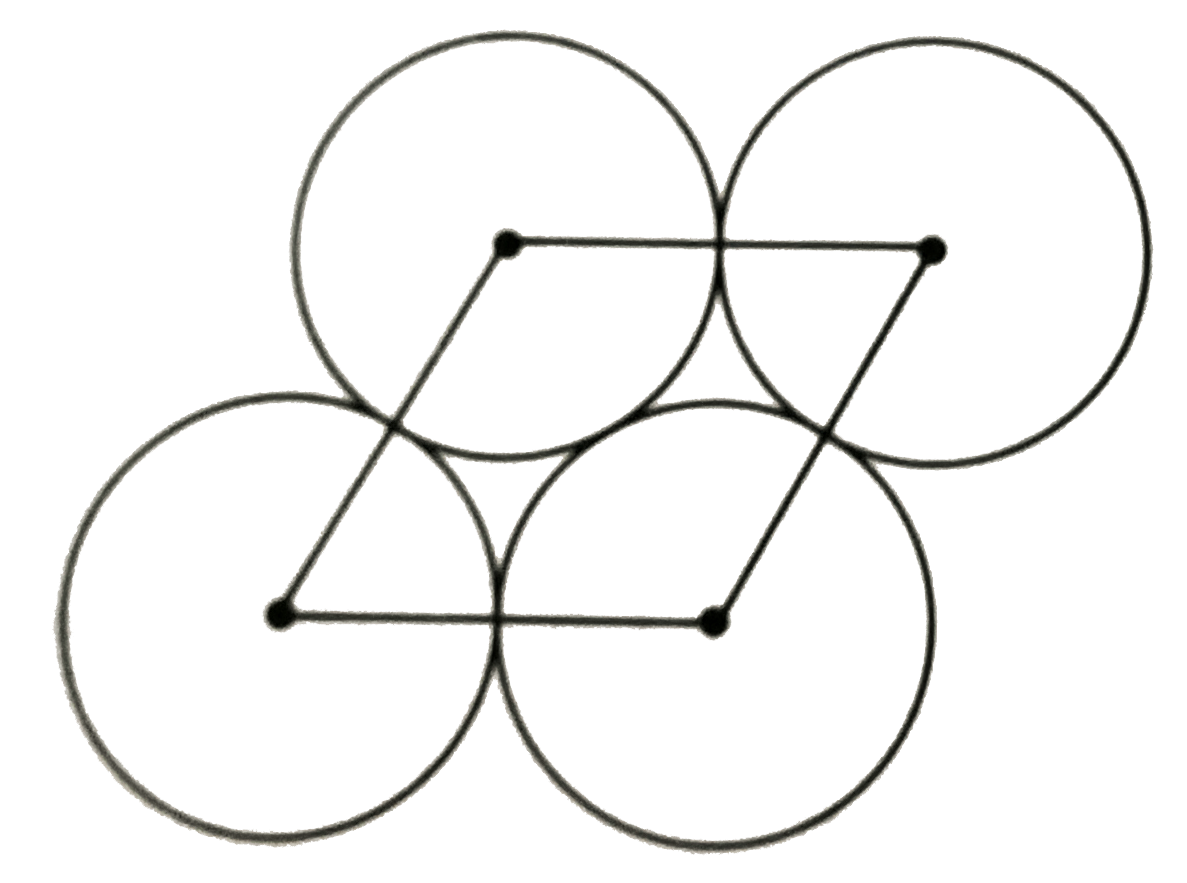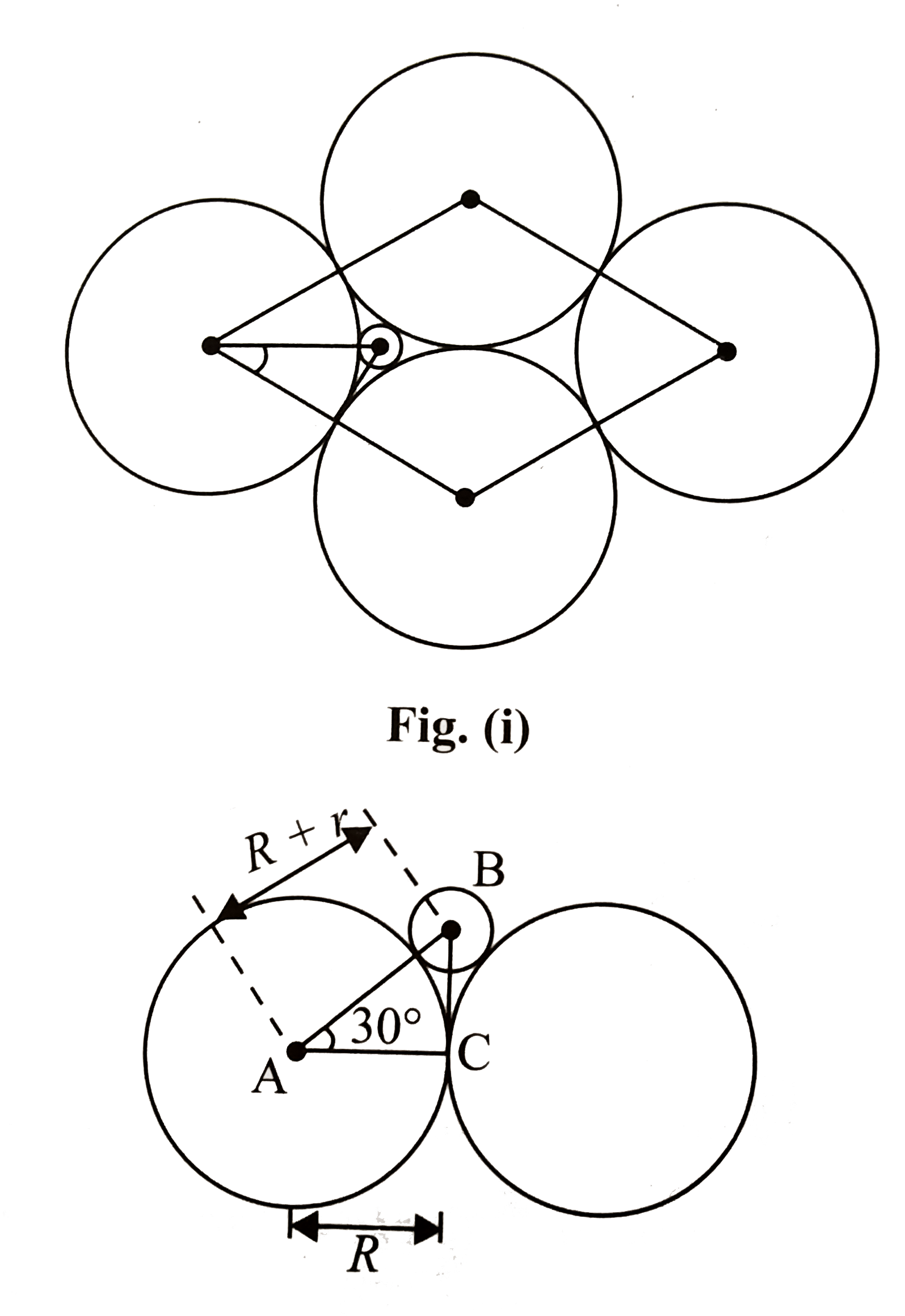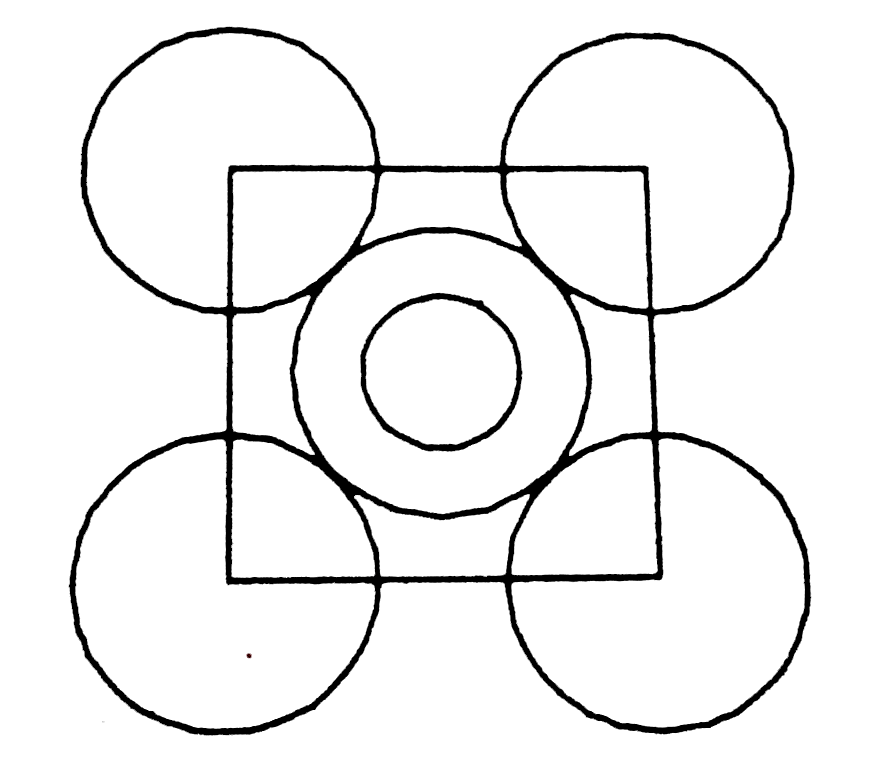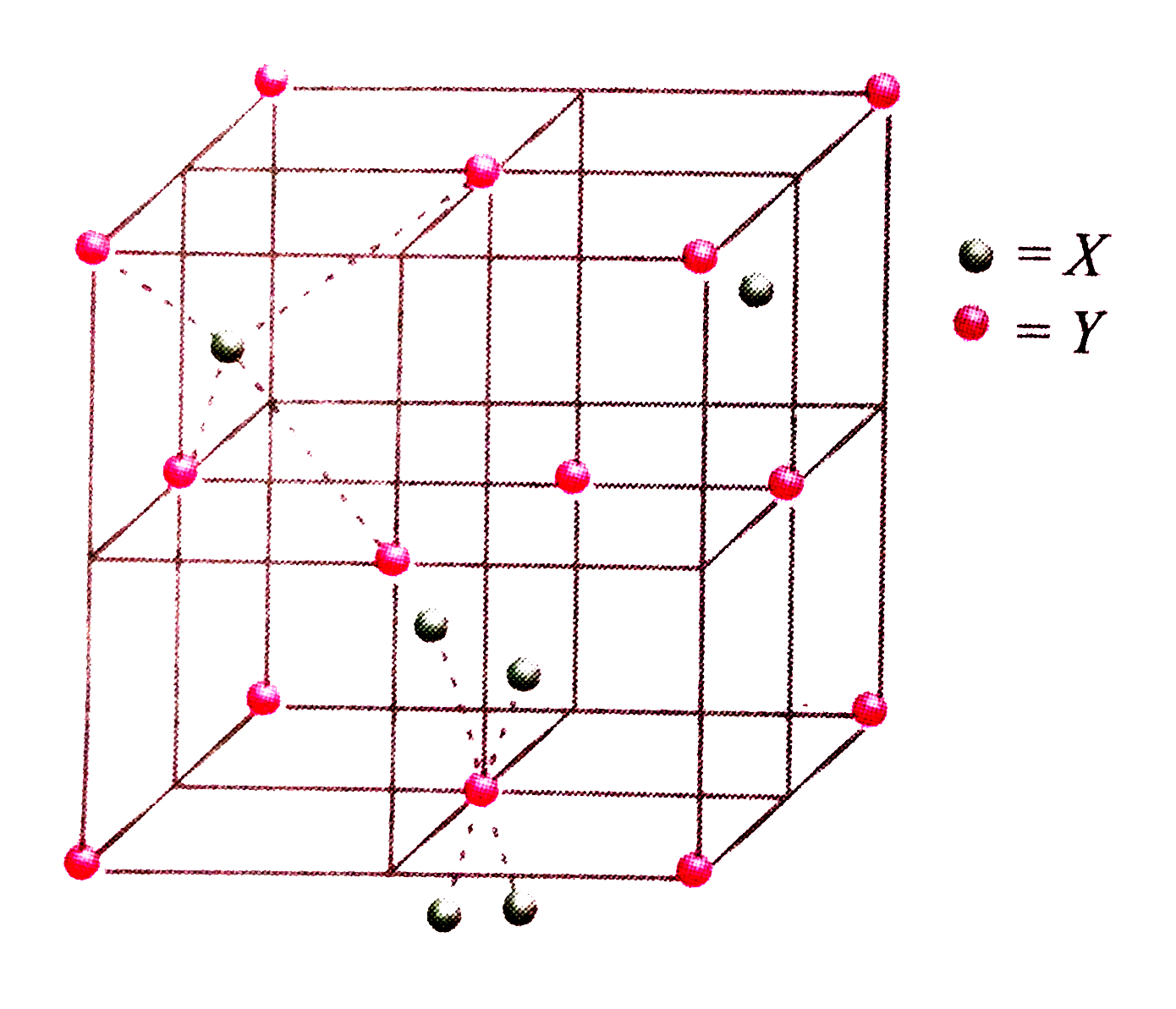Consider the parallelotrams shown in the figure below representing two-dimensional cells.

a. Which of these are primitive and which are multiple unit cells? Are any of these orthogonal?
c. What is the relation between the radius of circle and the length of parallelogram for the unit cell shown in the figure below (space filling diagram)?

d. How many nearest neighbour circles does a given circle have in the second figure abov?
e. What is the radius of the triangular hole shown in the second figure above?
f. What is the packing fraction of the unit cell in the second figure above?
Text Solution
a. Primitive unit cells are (b) and (c), because the only point contained in the unit cell are at the corners of the parallelograms.
Units cell (a) and (d) are multiple unit cells because there are points in the unit cells in addition to the corners of the parallelogram.
Unit cell (a) is an orthogonal unit cell because it contains angles of 90∘.
b. The unit cell content (Z) is the total number of atoms contained within the unit cell. From the second figure, only part of each circle at each corner is contained within the parallelogram unit cell.
Each circle is touching 4 other circles, so share of each circle is 14⇒Z=14×4=1.
c. a=2R, where a is the length of the side of parallelogram and R is the radius of circle.
d. The crystal coordination number (CN) is the number of nearest neighbour around a given atom, ion, or molecule in the crystal.
From the first figure (i), each atom (except the "surface" atom) is touching 6 other atoms, so CN=6.
e.
Let R is the radius of larger circle and r is the radius of the triangular hole:

In ΔABC,cos30∘=BaseHypotenuse=ACAB=RR+r,
⇒(R+r)cos30^(∘)=R.
⇒r=(2√3−1)R
f. Packing fraction =Area occupied by circlesArea of unit cell
Since Z=1 , area of circle =πR2
Area of parallelogram =2√3R2,
∴PF=Z×πR22√3R2=π2√3=0.907,
|
Updated on:21/07/2023
Topper's Solved these Questions
- BOOK - CENGAGE CHEMISTRY ENGLISHCHAPTER - SOLID STATEEXERCISE - Solved Examples13videos
SOLID STATE
- BOOK - CENGAGE CHEMISTRY ENGLISHCHAPTER - SOLID STATEEXERCISE - Exercises (Linked Comprehension)13videos
SOLID STATE
- BOOK - CENGAGE CHEMISTRY ENGLISHCHAPTER - REDUCTION AND OXIDATION REACTION OF ORGANIC COMPOUNDSEXERCISE - SUBJECTIVE TYPE4videos
REDUCTION AND OXIDATION REACTION OF ORGANIC COMPOUNDS
- BOOK - CENGAGE CHEMISTRY ENGLISHCHAPTER - SOLUTIONSEXERCISE - Ex 2.3 (Objective)9videos
SOLUTIONS
Similar Questions
Knowledge Check
- Question 1 - Select One
The packing efficiency of the 2D square unit cell shown below is
 A39.27%B68.02%C74.05%D78.54%
A39.27%B68.02%C74.05%D78.54% - Question 2 - Select One
The relation between atomic radius (r ) and the edge (a) of the unit cell are given below. Which is correctly matched.
ASimple cubic r=a2BFace centred r=0.3535aCBody centred r = 0.433aDAll of the above - Question 3 - Select One
The void space in a primitive unit cell is :
A48% void spaceB24% void spaceC96% void spaceD50% void space
The void space in a primitive unit cell is :
View Solution(A) bacterial cell is shown in the figure given below,lable the part (A) and
View SolutionHow are unit cell and space lattice related ?
View SolutionThe void space in a primitive unit cell is :
View SolutionThe packing effciency of the two dimensional cell square unit as shown is
 View Solution
View Solution


